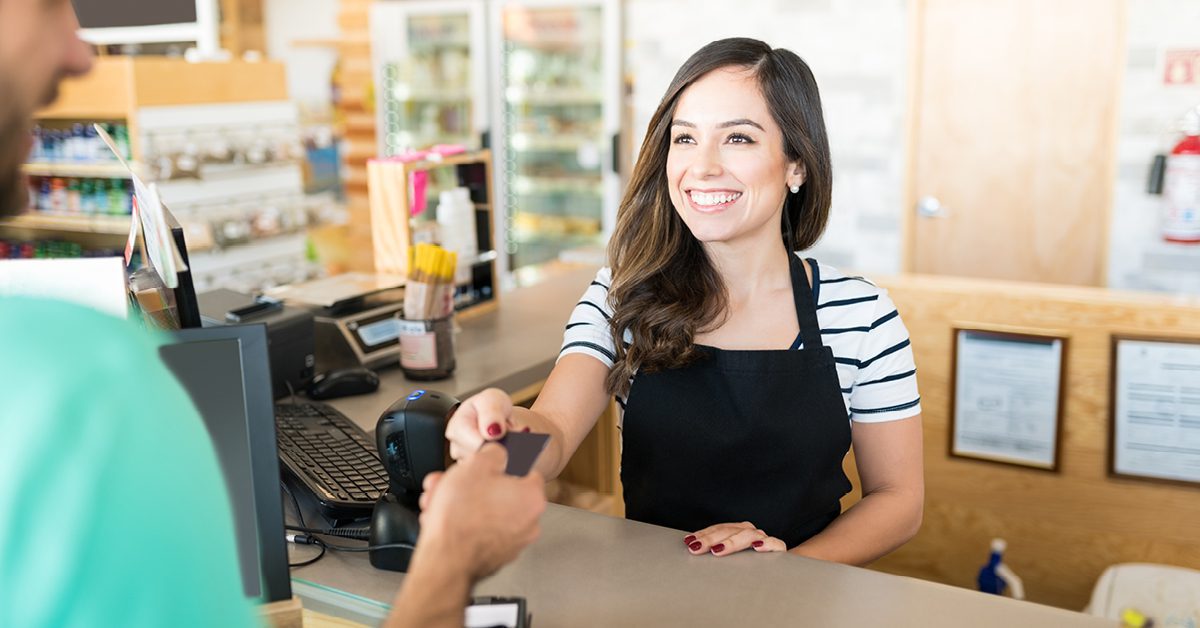“Modern consumers can’t stand friction in the shopping experience.”
Sorry to start off with such a horrible sentence full of marketing buzz words! But, once you translate it to its non-marketing meaning, it’s true. We all want a better shopping experience, whether we are shopping online or in-store. Fact.
When we talk about ‘friction’ in the in-store context, we can mean anything from long queues at the checkout and slow service to the items we want to buy being out of stock. Essentially, anything that inconveniences our trip.
So, with 43% of consumers saying they would be prepared to pay more in return for greater convenience, eliminating those inconveniences is a sure-fire way to help you gain a competitive advantage.
Read on to see how your EPOS system can help you to achieve this.
Streamlining your checkout process
Most of us do a significant amount of our shopping online, so we are used to near-instant checkouts. So, when we are then faced with a queue in store, a large majority of us are going to get somewhat impatient. Obviously, having no queue whatsoever is rarely going to happen, but retailers need to look at ways to keep delays as short as possible.
One thing that can make a huge difference is making sure your POS terminal is fast and efficient. Also, having up-to-date scanners that process items rapidly, as well as multiple payment options can all help to cut checkout times. In addition to this, deploying self-service tills/kiosks can also take the pressure off your staffed tills and provide a great alternative for some shoppers.
Utilise Mobile POS (mPOS)
Having a tablet connected to your entire POS system gives your sales assistants the ability to answer questions on the move. Why have your customers queue up to ask a question about pricing, size availability etc. when you can go to them! And, if they are ready to buy, modern mPOS systems also allow you to complete the transaction there and then rather than have your customer have to go and queue up at your main tills.
eCommerce integration
If you are using multiple options like kiosks, mPOS as well as traditional POS terminals, you want to make sure they are all running on the same system – using the same product databases, same payment options etc. but, you can go one step further and align your in-store POS with your eCommerce system. For example, if you are sharing the same stock management system, you give your customers the option to check the stock and pricing online, before coming in to store to purchase - thus eliminating wasted journeys.
Effective stock management
Utilising real-time stock tracking can have loads of benefits, not only for your customers, but for your own sales too. Setting up things like automated inventory alerts and replenishment reminders minimises the risk of items going out of stock and you therefore losing out on sales, disappointing your customers, or, heaven forbid, making them go elsewhere. It can also help you to see spikes in demand for items allowing you to be better prepared in the future.
Offering the ‘personal’ touch
Something else that is being seen more and more in-store that we have gotten used to when shopping online, are personalised offers based on previous purchases. By connecting your CMS to your POS you are giving your business the ability to offer loyalty schemes and/or targeted promotions. These can be displayed to your sales assistants via automated prompts when the customer is recognised by the system. Using this style of personalisation could increase cross selling or ensure customers return to you time after time.
We hope you find these examples useful. Looking for some further advice? We’d be happy to help! Please call us on 01299 488031 or email us via info@tills-direct.com.
With thanks as ever to Aures for their help with this article.
